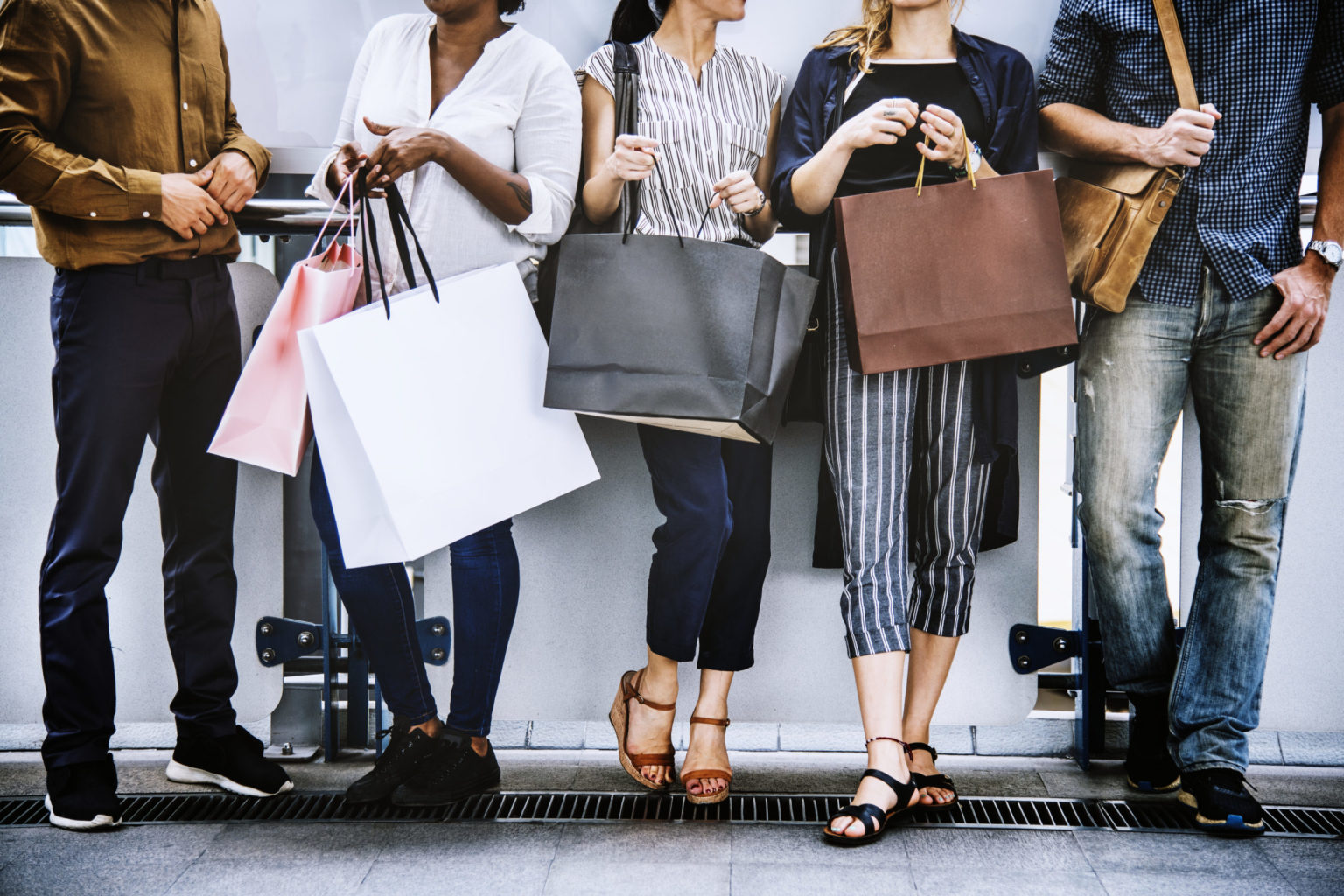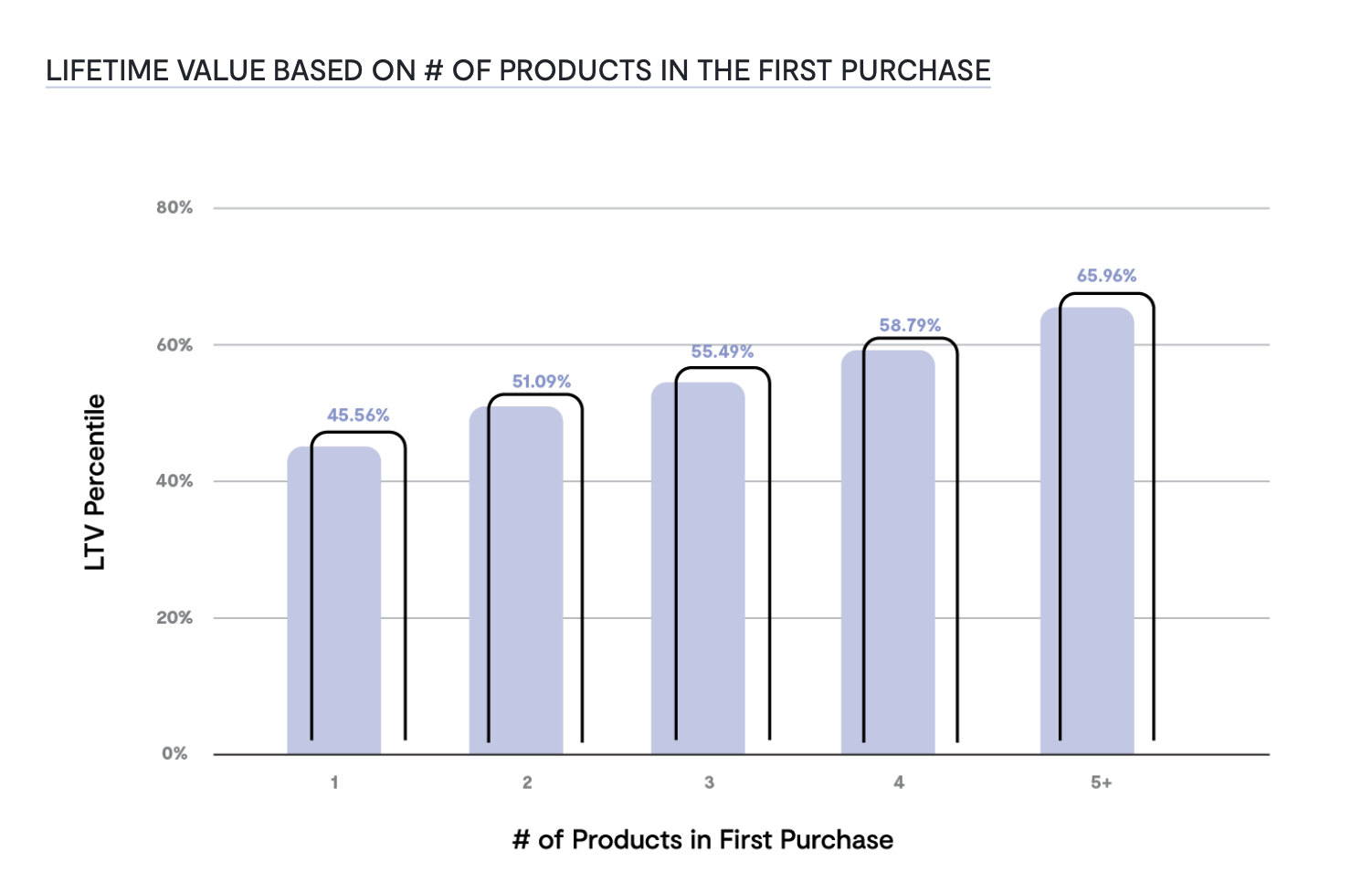
4 Tips to Increase Cart Size for First-Time Buyers
What’s the most important purchase in a customer’s journey?
The second purchase. The second purchase takes on almost mythic qualities for marketers as an elusive but profitable catch. It delivers the biggest increase in the likelihood that shoppers will return again and the biggest increase in customer lifetime value.
In fact, marketers who are able to convert shoppers to achieve a second purchase grow customer value by 101%, and set up the ability to grow customer lifetime value even more.
Going further into the data from The eCommerce Retention Opportunity, we found that second-time buyers are 57% more likely to buy again than first-time buyers.

How does increasing cart size encourage a second purchase?
What if you could take the already all-important second purchase and make it even more valuable? It turns out you can — and it’s all about increasing the size and order value of customers’ first purchases.
Looking at the data, we found that the more items in a customer’s first purchase, the more likely that customer was to make a second purchase. The same held true for the order value of the first purchase.

Equally as noteworthy, customers whose first purchase included multiple items were more likely to purchase multiple items again.

Crossing the second purchase chasm to turn one-time buyers into loyal, repeat customers is critical for retail marketing teams — and your retention strategy should already be in motion before your shopper hits “Order” on their first purchase. One of the best ways you can start is by making sure that first purchase counts.
Four Tips to Increase Order Size and Make the First Cart Go Further
Loyal shoppers are created through their experience with your brand, and the first purchase isn’t only an opportunity for a transaction and conversion — it’s an opportunity to provide that experience as a foundation for your customer relationships. The value that retailers offer shoppers through personalization and digital experience should be evident from the first touchpoint.
So when you’re thinking about increasing cart size through the average order value and number of items, consider how you can do that through the lens of experience and personalization, exhibiting the same amount of care and attention that shoppers have in-store. This way, you aren’t only increasing cart size, but demonstrating brand value.
Here’s how to tie company-level, customer retention and long term profitability strategies to day-to-day tactical marketing use cases.
Onsite pop-ups
As shoppers peruse your site and exhibit buying behaviors, such as viewing the same product multiple times or adding that product to their cart, trigger an onsite pop-up that surfaces relevant, personalized product recommendations to shoppers and encourage them to add that item to their order. You should also trigger onsite pop-ups for products that are in adjacent categories to the product that your shopper has been viewing to further increase cart size. With personalized onsite messaging and recommendations, you can create an experience for shoppers that mimics experiences that they have in-store.
Triggered emails
Bring the onsite experience into shoppers’ inboxes by including similar messaging about adding related items to their order in triggered emails. Recommendation triggered emails are intended to inspire shoppers and surface products they haven’t yet discovered or considered purchasing. The dynamic content of these emails can be informed using an individual’s previous browse or add-to-cart behavior, past purchases or site-wide trends and best sellers.
Do your shoppers ever wonder, “What shoes would I wear with this dress?” or “What helmet would I buy with this bike?” Cross-sell triggered emails suggest complementary products that are typically bought with a specific product the shopper is looking to purchase. This approach is effective in browse abandonment emails, as these bottom of the funnel messages present a valuable opportunity to get customers to make a purchase and to increase the value of that purchase.
Checkout modals
If a shopper only has one item in their cart or a low average order value, recreate the in-person checkout experience that is designed to increase cart value digitally. Think about standing in line at a store. The queue is lined with all kinds of different items that you’re likely to grab before checkout. Once shoppers hit the checkout page, if they still only have one item in their cart or their cart value is under $100, include an on-page modal advertising other products in which they might be interested that they can add on to their order.
Post-purchase triggered emails
Finally, you can give customers the opportunity to add on to their order by featuring targeted messaging in your post-purchase triggered email. For instance, you might include a related product recommendation and offer to let customers add that item to their existing order for 24 hours. In this case, you can even sweeten the deal by offering to waive shipping or take 10% off the existing order if shoppers do add on that new item.
If shoppers don’t take that opportunity, activate next-best product emails. Next-best product emails are sent to customers who have recently made a purchase with your brand and recommend another product that is frequently purchased next or complements the item they just bought. That audience data can also be leveraged across channels for retention like ads, SMS and direct mail. This takes into consideration more data than just a customer’s recent transaction, as it also looks at your entire audience’s overall purchasing patterns.
Go From Bigger First Purchases to More Second Purchases
Don’t leave the second purchase up to chance. Knowing your customers and keeping them at the center of your outreach with communication tailored to their preferences will keep them coming back for more.
Once you get customers to increase the size of their first purchase, your chances of securing the second purchase — and beyond — should increase.
For more on what it takes to unlock your second purchase opportunity and build your retention strategies, check out our eBook on eCommerce Retention.





